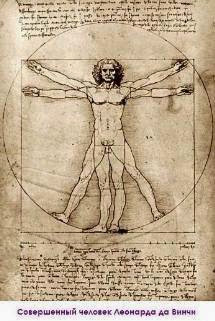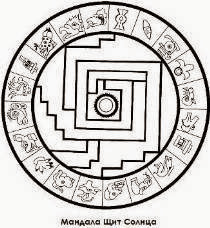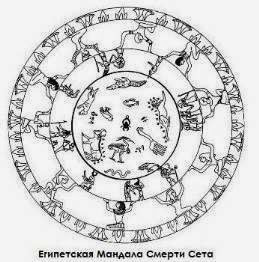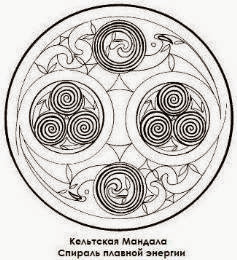
The founders
of the Academy
Vladimir Kuznetsov

In regard to psychological aspect, mandala is a symbolic expression of the Center, entity, a source of energy.
It’s not for nothing that Carl Jung called the spring of mandala the central point in the human psyche. In his memoirs, Jung noted that in 1916, he drew his first mandala, once wrote «Septem Sermones Ad Mortuos» («Seven sermons to the dead»), but at that time the meaning of it remained unclear for him. Only after some time he began to understand what the mandalas, that he began to draw every morning in his notebook, are. Each drawing on the understanding of Jung reflected some of his internal state at that moment, so he began to use those pictures to capture his «mental transformation».
At the same time, in the period between 1918 and 1920 years, he understood that the purpose of mental development is self-sufficiency. There is no linear evolution, there is some closed «sameness». Unidirectional development is possible only at first, then the Center is emerging increasingly. Recognition of it returned self-confidence and inner balance to Jung (the period was psychologically hard for Jung). When he found out what mandala expresses, he, self-professedly, reached his ultimate knowledge.
Jung considered mandalas spontaneously appearing in dreams, imagination and art to be an evidence of that the process of individuation-movement to oneself, to one’s self-realization, — was happening. Human task, in Jung’s opinion, was to become own self, by realizing one’s nature, and this means nothing else but movement to sameness, i.e. to one’s integrity, unification, consistency.
The notion of sameness as a supreme mental integrity, as complete unification of opposites, embracing both conscious and unconscious, was for Jung what mandala expressed. It is sameness what creates the pattern of soul that appears in a mandala. Mandala reveals the dynamics of sameness movement, creating a kind of matrix, which expands our uniqueness.
The spring of mandala, according to Jung, is a premonition of the center of personality, «a kind of central point in soul, which everything is connected with, which everything is organized by and which itself is a source of energy». The power enclosed in the center of our being (in sameness) induces us to show ourselves and strongly leads us to self-realization.
Energy of the Center manifests in insuperable coercion and desire to become what everyone is, as well as any organism strives to achieve the form which is distinctive for its nature, despite the circumstances. This Center is not believed to be ego and it isn’t felt like that, but, if it’s possible to say so, this is the sameness.
Visually, mandala is just some drawing in a circle, and such simple understanding of mandala is mainly used in psychotherapy, where mandala is not based on rules (as in religious practice), but is born spontaneously in free self-expression of concerns.
Why, it should seem, ordinary picture is so important and influences us so much? Because the circle spring is a symbol that touches the deepest and the most common parts of our essence. Susan Fincher writes: «Let’s turn to natural history in search of an answer. Consider the moment when we all come into being. We grow from a tiny round eggs contained in the womb of our mother. In her womb, we are surrounded by and firmly hold on inside a spherical space. When it is time to be born, we are extruded by series of circular muscles through tubular maternity channel and come into the world through a round hole. Being born, we find ourselves on a round planet, rolling on a circular orbit around the Sun. We are riveted to the Earth by gravity, so we are not aware of our rotation. However, our bodies know about it. If we look deeper, at the level of atoms, which make up our bodies, we will find another universe where elements roll on their own circular orbits. Subconscious sense of rotation, as well as memory of the uterus, is encoded in our bodies. Thus, we are predisposed to react to the form of circle. These facts of human life are common for all the people, both ancient and contemporary..»
Because the circle spring is a symbol that touches the deepest and the most common parts of our essence. Susan Fincher writes: «Let’s turn to natural history in search of an answer. Consider the moment when we all come into being. We grow from a tiny round eggs contained in the womb of our mother. In her womb, we are surrounded by and firmly hold on inside a spherical space. When it is time to be born, we are extruded by series of circular muscles through tubular maternity channel and come into the world through a round hole. Being born, we find ourselves on a round planet, rolling on a circular orbit around the Sun. We are riveted to the Earth by gravity, so we are not aware of our rotation. However, our bodies know about it. If we look deeper, at the level of atoms, which make up our bodies, we will find another universe where elements roll on their own circular orbits. Subconscious sense of rotation, as well as memory of the uterus, is encoded in our bodies. Thus, we are predisposed to react to the form of circle. These facts of human life are common for all the people, both ancient and contemporary..»
And since mandala arises in human, who displays it outward, in the form of external image, it becomes clear that while working with mandala there is no place for perceiving mandala as a magical widget which affects the man contemplating it.
Here, the impact of the person on itself takes place through the image, through picturing itself, its essence in an external image, and interaction with this image, which allows the person to realize those internal forces and mechanisms, which have resulted in creation of this image.
There is some mysticism (i.e. mystery) in mandala, because the World is a mystery for the man, and its comprehension is possible only via osmosis of the inner secrets. Illustration, manifestation of one’s current internal state, aspirations, desires, energies and spirit is possible by using mandalas image. Mandala is mystical, but not magical (magic is ability, power, i.e. ability to do, to be able) – it is only the way to mystery comprehension. It does not contain the active outset on its own, and cannot make an impact. Only performer could influence (act)! Magic is not in the mandala, but in the man contemplating mandala!

Therefore you shouldn’t over-mystify mandala, for it is nothing more than a character born in the mind of person, it’s the thing and object, with the help of which person can find itself. Mandala provides a map of inner reality, directing and supporting the psychological development of those who want to advance the awareness of oneself.
«Oh, Noble, this paradise also does not exist, it is located in the Center and in the four major points of your heart and comes out of it before appearing in front of you. These forms do not come from any other place: they are only tissue of your mind. And in such a way are to recognize them» (Bardo Todol).
And that’s why guru would certainly remind adherents, griping the way of mandala, that mandala images are not real, but are merely a projection of one’s own consciousness. Since the adoption of the characters as Reality would mean idolatry – symbols worship. However, they are not the symbols which are real, but what stands behind them. There is psychological reality of person, the reality of its inner world, which is expressed in these symbols, behind them.
What kind of psychological reality does mandala reveal? Where can we come with the help of it?
Carl Gustav Jung wrote: «Sameness, I think, was like the Monad, which I am, and which is my world. Mandala represents the Monad, and corresponds to the microcosmic nature of the soul.» Psychological development, he wrote, is not clear and linear, but circular, it consists of revolving again and again to the center of the soul, to the Sameness.
It is Sameness which creates the pattern of the soul that appears in mandala. Mandala reveals the dynamics of sameness movement, creating a kind of matrix, which expands our uniqueness. Mandala circle reflects its sameness, containing the desire of soul to self-realization and wholeness.
Creating a mandala, we create an individual character that reflects what we are at the moment. The circle, drawn by us, seems to invite different parts of our inner world to manifest and come into interact with each other, it initiates their movement and merge, bringing us to integrity.
That’s why, while drawing Mandalas, resolution of internal conflicts and release of tension takes place. Perhaps, it is because the circle shape resembles the shape of the uterus, which safely contained and was growing us up. Maybe, drawing «magic circle» has psychological significance for the same reason: we create a kind of our own sacred protected space in the world, where there is a concentration of all our strength and energy. Painting the mandala, we perform the same psychological action.
And that is why mandala is a unique tool of self-knowledge and self-development, which can help you resolve many urgent problems, which is successfully used in mandala-therapy.
The word «mandala» in Sanskrit means «circle, round, circuitous, disc, wheel, ring, sphere, ball, orbit, country, territory, region, society, assembly, meeting».
In my opinion, in the word Mandala we can see quite non-accidental resemblance to well known explicit Russian word, denoting the female genital organs (especially if you bear in mind the close connection of Sanskrit and Russian language). By the way, the big glossary of Vladimir Chernyshov defines the word «mandala» as follows. Mandala (In Sanskrit «Manda» is the essence, entity, center + la (suffix) is a reference to the completeness, the full possession = everything existing) — 1) canvas or board with symbolic sacred writings of Buddhism imaged on them. 2) symbolic representation of the universe, similar in function to a Christian icon. 3) place by the Bodhi tree where Siddhartha (Buddha) reached enlightenment, i.e. the territory with all kinds of perfections. 4) place in the Center of kajdana; the sanctuary of the Buddhist temple.
In my opinion, it is obvious that these words have the same root, denoting a protected area, place, a receptacle, and pointing to the maternal inception, to integrity which gives birth to a life – the female uterus. Mother, uterus is promandala. Mandala is Great Mother, initial substance,

giving birth to all the things existing: it is the Earth, the man and matter, right down to elementary particles and force fields, and all the boundless Universe. In general sense, mandala is a universal symbolic model of the universe, human consciousness and various life processes – it expresses objectification, manifestation, birth of life.
In general sense, mandala is a universal symbolic model of the universe and of human consciousness, cosmic processes, Galactic cycles and life principle of all living beings. Mandala is Mother, initial substance, giving birth to all things, so both it and the Earth, and the man, and the atom, which is included in the basis of human being and the Universe, for which the Earth is also an atom. Mandala expresses an objectification, manifestation, birth.
As a primeval form, related to the basics of Being, Mandala is known and applied in all known cultures.
It happened to me to hear from people professing orthodoxy (both from ordinary citizens and from clerics), that meditation on the mandala is contrary to Orthodox beliefs and in general is devilry. However, there is a great many of mandalas in Orthodoxy. For example, icons «Burning Bush», «Eye of Omniscience» are among these Mandalas. Mandala doesn’t contradict at all and doesn’t insult anyone’s religious feelings, because it is not a religious term, but the «technical» one. The essence of Mandala is deeply psychological and symbolic, that is why mandalas exist in all cultures and religious systems. It is not only compatible with the ideas of Orthodoxy, but on the contrary, Orthodoxy has been very actively using the principles of Mandala. In spite of the fact that the term «mandala» refers to another religious culture.
Even the very essence of the icons stands in close relation to the Buddhist Mandalas, which are perceived as the home of the deity. So in fact icon is also an image of God’s face and it is used precisely to establish inner connection with God.
 |  |  |
Well, here is one of the Mandalas of the Aztec tribe:
The Sun with day calendar symbols: crocodile,
 wind, house, lizard, snake, skull, deer, rabbit, water, dog, monkey, grass, reeds, ocelot, eagle, vulture, movement, knife, rain, flower.
wind, house, lizard, snake, skull, deer, rabbit, water, dog, monkey, grass, reeds, ocelot, eagle, vulture, movement, knife, rain, flower.
 This mandala describes the spheres of influence and dependency of different spheres: the world of star, the world of gods, the world of people.
This mandala describes the spheres of influence and dependency of different spheres: the world of star, the world of gods, the world of people.
There is visualization of material basis of life, field crops and papyrus in the outer circle.
Mandala is spiral, like continuous energy.
It is typical for Celtic symbolism to have many different ornamental paintings of spiral. They describe the flow of physical and spiritual energy.
However, mandala achieved the most complete theoretical and practical development in India and Tibet – both as art genre and as ritual and meditative symbol.
One of the oldest mandala-like geometric symbols used for meditation at yoga and Tantrism schools is the Shri-Yantra.
A.P. Kulaichev, researcher, writes the following about Shri-Yantra:
«The history of the Shri-Yantra appearance goes back into centuries and is shrouded in mystery. The first documentary mention of it can be found in Atharvaveda (1.2 thousand years BC) – here is the hymn to the ritual image formed of nine intersecting triangles. According to implicit data, the origin of Shri-Yantra can be even more ancient – pre-Aryan (2.5 thousand years BC).
In the Indian tradition, Shri-Yantra symbolizes the body of the goddess Tripura-Sundari, though in some texts it is known as the navel of Divine Mother.
The source of the emergence of Shri-Yantra is unknown. The seeming simplicity of the geometry of the Mandala is deceptive, in fact it is so complicated that a powerful computer which could have calculate this shape appears in imagination, or the hypothesis raises that the primary image (protomandala) had a spherical, three-dimensional shape, and was drawn on… or inside a transparent crystal. Another version is that there was such flat image of a star in ancient times, which touched the external, circumscribing circle with its 16 angles, and all the subsequent forms, including the contemporary forms of Shri-Yantra, are just attempts to get closer to its genuine image.
Currently, it has been scientifically proven that Shri-Yantra really has a great influence on the human psyche. In particular, experiments have shown that even short-term fixation of sight on this picture slows down left-brain activity, responsible for logical and analytical thinking, and activates the right hemisphere, action of which is often manifested in the form of creative insight and intuition. Conditions like this may arise during some ritual mystical ceremonies, or even while applying psychotropic substances.»
 |  |
Working with circular images is similar in some ways to the action of homeopathic remedies – slowly but steadily. However, emotional release from internal negative contents can be very rapid and rousing, and occur within one session.
Usage of Mandalas (circular images) in psychological practice is very effective, because the shape of the circle itself helps to access the deep areas of consciousness, contributing to both the disclosure of internal energy, and turning and clearing of suppressed and forgotten, but not passed and not released worries.
Psychotherapy using Mandalas, in general, is aimed at one main goal – it is to bring various internal forces, which for various reasons have been restrained, in the interaction and initiate their merger. Healing happens due to growing internal integrity.
Добавить комментарий
Для отправки комментария вам необходимо авторизоваться.